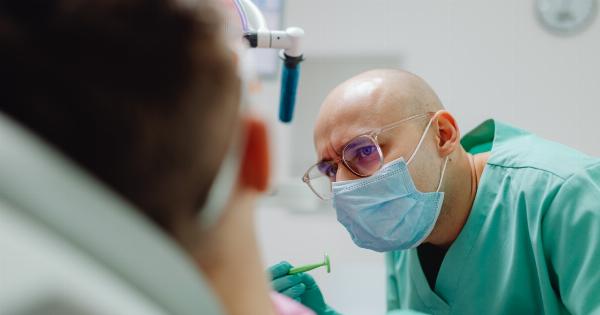Urinary tract infections (UTIs) are a common and uncomfortable condition that can affect people of all ages and genders. They occur when bacteria enter the urinary tract, causing pain and discomfort.
While UTIs can happen to anyone, certain factors can make individuals more susceptible to developing them. In this article, we will explore the different groups of people who are at a higher risk of UTIs and delve into the underlying reasons behind their susceptibility.
1. Women
Women are more prone to UTIs compared to men due to anatomical differences. The urethra in women is shorter, making it easier for bacteria to reach the bladder.
Additionally, the opening of the urethra is closer to the anus in women, which increases the risk of bacteria from the gastrointestinal tract entering the urinary system. Hormonal changes during pregnancy and menopause can also contribute to urinary tract infections in women.
2. Sexually active individuals
Engaging in sexual activity can also increase the risk of developing a UTI, especially in women. Intercourse can introduce bacteria into the urethra and push it into the bladder.
This risk is further heightened for individuals who engage in frequent sexual activity or have multiple sexual partners. Proper hygiene, including urinating before and after sexual intercourse, can help reduce the risk of UTIs in sexually active individuals.
3. Individuals with reduced immune function
People with weakened immune systems are more prone to infections, including UTIs. Conditions such as diabetes, HIV/AIDS, and autoimmune diseases can compromise the immune system’s ability to fight off bacteria, increasing the risk of UTIs.
Additionally, certain medications that suppress the immune system, such as corticosteroids or immunosuppressants, can also make individuals more susceptible to urinary tract infections.
4. Elderly individuals
Elderly individuals, particularly those living in long-term care facilities, have a higher risk of UTIs.
Factors contributing to this increased susceptibility include weakened immune systems, urinary incontinence, the use of catheters, and age-related changes in the urinary tract. Diagnosing UTIs in the elderly can be challenging, as symptoms may be milder or mistaken for other health issues. It is crucial to monitor and promptly treat UTIs in older individuals to prevent complications.
5. Individuals with urinary obstructions
Blockages or obstructions in the urinary tract can prevent the complete emptying of the bladder, creating an environment conducive to bacterial growth.
Conditions such as kidney stones, urinary tract abnormalities, tumors, or an enlarged prostate can obstruct the flow of urine, leading to an increased risk of UTIs. Surgical interventions or medical treatment to address the obstruction may be necessary to reduce the risk of recurrent infections.
6. Individuals with bladder dysfunction
People with bladder dysfunction, such as incomplete bladder emptying or neurogenic bladder, are more susceptible to UTIs. Incomplete emptying can leave residual urine in the bladder, providing a breeding ground for bacteria.
Neurogenic bladder, often caused by nerve damage or dysfunction, can cause improper bladder function, leading to stagnant urine and increased UTI risk. Managing underlying bladder dysfunction is essential in reducing the likelihood of recurrent UTIs.
7. Individuals with a history of UTIs
Once an individual has experienced a UTI, they are more susceptible to future infections.
Recurrent UTIs can occur due to various factors, including incomplete treatment of previous infections, the persistence of bacteria in the urinary tract, or reinfection from external sources. Identifying and addressing the underlying causes of recurrent UTIs is vital in preventing their recurrence.
8. Individuals with certain hygiene practices
Personal hygiene practices can also influence UTI susceptibility. Wiping from back to front after using the toilet can introduce bacteria from the anal area to the urethra, increasing the risk of UTIs.
Insufficient hydration can also concentrate urine and decrease the frequency of urination, allowing bacteria to multiply in the urinary tract. Encouraging proper hygiene habits and maintaining adequate hydration can help minimize the risk of UTIs.
9. Individuals using certain types of contraceptives
Some forms of contraception, such as diaphragms or spermicides, can increase the risk of UTIs. Diaphragms can put pressure on the urethra, leading to incomplete bladder emptying and higher bacterial growth.
Spermicides may alter the balance of bacteria in the vagina, making it easier for UTI-causing bacteria to thrive. Considering alternative contraceptive methods or taking preventive measures, such as urinating after intercourse, can help reduce the likelihood of UTIs.
10. Individuals with underlying urinary tract abnormalities
Structural abnormalities in the urinary tract, present from birth or acquired later in life, can predispose individuals to UTIs.
Conditions such as vesicoureteral reflux (VUR), where urine flows backward from the bladder to the kidneys, or urethral strictures, which narrow the urethra, can interfere with normal urine flow and promote bacterial growth. Identifying and managing these abnormalities through medical interventions can help reduce the risk and recurrence of UTIs.
While certain groups of people may be more susceptible to UTIs, it’s important to note that anyone can develop a urinary tract infection.
Maintaining good personal hygiene practices, staying hydrated, and seeking prompt medical treatment when symptoms arise are essential in preventing and managing UTIs.






























